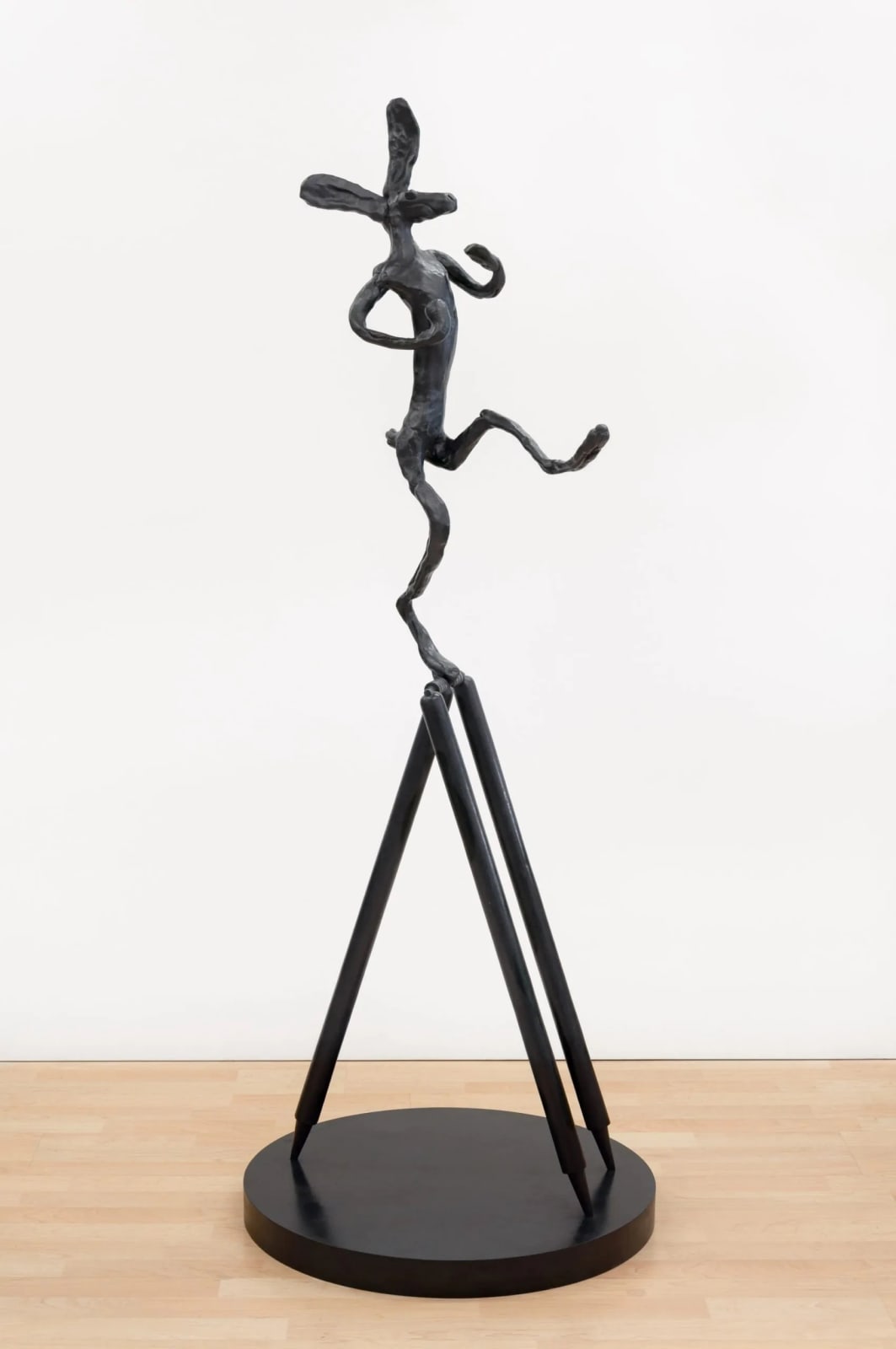Barry Flanagan British, 1941-2009
"Truly, sculpture is always going on. With proper physical circumstances and the visual invitation, one simply joins in and makes the work." - Barry Flanagan
Barry Flanagan's innumerable contributions to and achievements in the history of sculpture, as well as his selection as the representative of Britain at the 40th Venice Biennale in 1982 and his election to the Royal Academy of Arts and recognition with an OBE in 1991, substantiate his position as one of Britain's most important and innovative sculptors.
Known for his unique approach to form and material, Barry Flanagan (1941-2009) Flanagan's work has been exhibited widely in major galleries and museums around the world. He is particularly celebrated for his bronze hare sculptures, which have become iconic symbols of his playful and thought-provoking art.
Born in Prestatyn, North Wales, in 1941, Flanagan studied architecture at Birmingham College of Arts and Crafts and graduated from St. Martin's School of Art in London on the Vocational Diploma in Sculpture in 1966, and he taught at St. Martin's School of Art and the Central School of Arts and Crafts between 1967 and 1971. Establishing himself as a leading figure among the avant-garde and a proponent of emerging movements like Arte Povera, Land art, Process art, and Conceptual art, Flanagan first began revolutionizing the language of sculpture and the prospects of artmaking in three dimensions while exhibiting soft sculpture and concrete poetry as a student, before his decisive turn to bronze in the 1980s. His first solo exhibition, staged at London's Rowan Gallery in 1966, was considered a critical success in numerous reviews and earned the artist widespread recognition from a generation of influential artists and thinkers including the curator Lucy Lippard.
Flanagan has since been included in solo and group exhibitions at countless museums and galleries across six continents.















